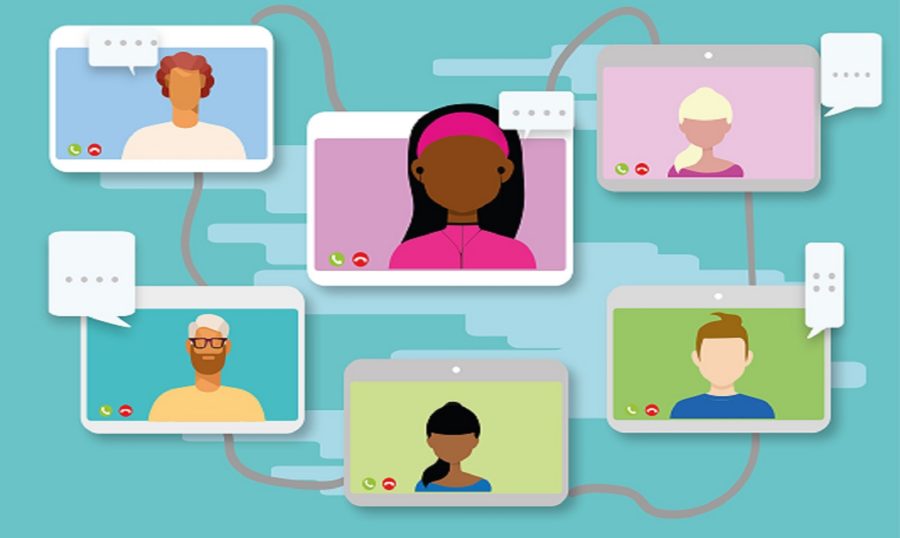
The pandemic may have tarnished our interpersonal relationships for over a year, disrupting the social species in us, but resilience could come in various shapes and gigabytes. In the past few months, we found refuge from the web to link us back together, conducting a series of so-called “micro-webinars” not only to upscale our skills and qualifications, but for us to also keep up with social connectivity, interacting even in the digital context. Many of those who have worked from home found ease in touching base with co-workers and employers through famous teleconferencing platforms such as Zoom, Google Meet and Go-To-Meeting to stream both evergreen and live meetings and webinars.
It started with a hopeful note, “Optical Industry: Way Forward Post-Covid19,” a webinar aired by long-time business administrator in the GCC, Mushtaq Ahmed. The presentation was adopted into a microlearning virtual environment to push aside the constraints of social distancing at the peak of the Covid19 crisis back in May 2020. An engaging discussion on the impact of the pandemic on consumer behavior and the retail industry’s frontliners, it also delved into the pros and cons of online businesses. At the very least, it kickstarted a series of soft skill-based talks, fashioned in conversational style and molded for eye care professionals in the region.
“Stop Selling, Start Building” brewed the perfect concoction for regaining strength after the crisis, and was followed by an interactive motivational discussion on consumer psychology through “The Pre-Sales Process: Knowing Your Customers like the Back of Your Hands”, a predecessor to the webinars on customer support, titled “Identifying Customer Needs through Relationship Building”, and knowing customers better in “Mapping Questioning Skills with Human Personality”. Attendees were hooked with the webinars’ spontaneity that somewhat afforded them access into the human psyche. This was evident in the audience’s favorable overall feedback and requests for more eye-opening serialized meetings, so to speak. With about a month’s preparation, social media engagement somehow piqued the readers’ interest through polling and direct invites.
It’s interesting to mention the challenges faced by speakers, as well, though it may seem technical in nature, for example, when the screen-sharing suddenly malfunctions or when an attendee accidentally opens the video camera. And what about those that accidentally jot down scribbles on the screen while the presenter is screen-sharing their slides, or even those moments when the speaker attempts to make “eye contact” with attendees but is actually eye-balling the camera in real life. At the end of the day, we realize that we are, after all, humans behind the machine, groping for another human at the end of the line. It briefly poses a safer space for familiarity at the time of disconnect, or creating snippets of “meaningful connection”, which Dr. Wayne Baker of Psychology Today posits in his article “How to Connect Meaningfully in a Virtual Meeting”: “it’s an interaction in which we feel accepted, understood, and supported. We feel heard and cared for. We have a sense of belonging”.
The series also paved the way for experimentation on teleconferencing models. Enabling the polling features gave us glimpses of the participants’ perspectives, even on a surface level, enabling speakers to gain a bird’s eye view of their predispositions and ideals – sort of immediate feedback. Just like in actual meeting spaces, say, when we fervently object to a lousy project proposal on the spot. In a broader sense, this two-way communication mirrors our in-person discourses in some way.
In between these topics were industry-specific ones, such as “Insights on Low Vision Practice” by Dr. Ithar Beshtawi, a low vision expert and prominent optometrist in the region who broadcasted live from Palestine to share fresh information that placed low vision rehabilitation and assessment topics on the spotlight. There is a balance in the structure of each webinar in order to cover every aspect of the practice. Be it about theory or praxis, each presentation generously offers a piece of the pie. And talk about covering almost anything tangible, a webinar for optometry students, titled “Career Paths for Graduating Optometry Students”, served as a mind drill for climbing the career ladder. Covering an hour of thought-provoking discussion, Dr. Gilbert Nacouzi, a data scientist and optometrist, eased the weight off of undergraduates’ anxieties, advising them to choose a career that is “purpose-driven” instead of merely “goal-oriented”.
As we head back to our normal lives, we can reflect and look back to the web that stitched us back together. Pandemic or no pandemic, the webinars and online meetings may have taught us the value of real-life connections, in one way or another, while we learn.

